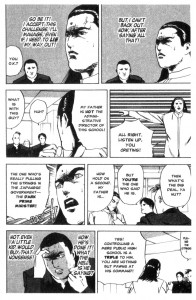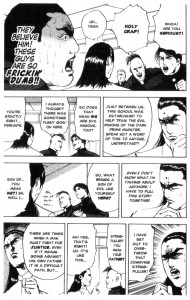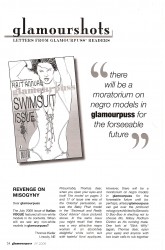
On Kickstarter, suffering for art, and helping out
August 10th, 2012 Posted by david brothersBack in early July, Rich Johnston posted about a Kickstarter for Telikos Protocol. I thought it looked neat and I had a spare ten bucks, so I kicked ten dollars their way in exchange for DRM-free copies of their first three issues. They were a few thousand dollars short of their goal, but every little bit helps, right? Three hours later, I got an email update from their Kickstarter that began like this:
We are sat here trying to fathom quite what’s happened. We just don’t know how to react – we hit target after just 2 days, 1 hour and 49 minutes. We’re finding this tough to compute, but while we do that, some extra updates!
Three thousand dollars in three hours and they hit their goal. They wanted 9,500 and they got 50,119. They get to make a series of books that’s much, much better than they ever expected. On top of that, they get to make their book. That’s the most important part, I think.
I’ve contributed to ten Kickstarters thus far, supporting a wide range of comics from webcomics to Image comics to OGNs to Dave Sim’s digital efforts. Ten isn’t a lot of projects, but I feel good about it. I can afford that, and it’s nice to be able to help someone get their work done. Paying it forward, maybe — I’m blessed enough to have a steady job so that I’m not living on exceedingly thin margins. So I do what I can.
There’s a conversation going around comics internet right now about Kickstarter. Tom Spurgeon has a nice conversation going here. It was sparked by a post in which TCJ editor Dan Nadel said this:
-And finally, Kickstarter. Guess what? You don’t get to call yourself underground if you’re on Kickstarter. Guess what else? You don’t get to call yourself a publisher either; you’re just someone who pays a printing bill. Take pre-orders on your site. Sell your boots. Do what you have to do. But don’t go begging for money so that you can then give 5% of it to Amazon.com, which is actively trying to put you (!), and the stores you hope to shove this shit into, out of business. I’m all for raising money for art, but it would be nice if there was some sense of proportion. No one needs this anthology but it might do fine “in the market”. I’m so sick of seeing perfectly viable (viable, but not smart or interesting; viable) comic book projects on there. People can do what they want, but when you’re out there hustling dough for your movie-ready zombie-baseball graphic novel, or fucking Cyberforce, or your poorly thought through Garo book, you just look like a schmuck.
Just this morning I saw Sean Collins saying this:
The problem is, well, why on earth do you need to Kickstart a project in which 60 illustrators who (judging from the samples) draw in lush, inviting, commercial-friendly styles make pin-ups from someone else’s intellectual property, drawn from a show that’s so hugely popular with the project’s target audience that it could make its money back and then some during the first hour of SPX without breaking a sweat? If the project’s publisher had asked its 60 contributors to paypal her twelve bucks, that would have covered the $700 goal of the kickstarter right there. Indeed the modest amount being requested makes it more baffling, not less, since it’s undeniable that the zine could have been independently funded with a modicum of self-sacrifice, which again would no doubt be handsomely rewarded the moment the book went on sale. Instead, what we have is a project that’s made three times its goal amount with 18 days to go.
(the bolds in each quote are mine, of course)
and I have a real problem with this type of thinking. ’cause here’s the thing: life sucks. You can get sick once and find yourself under three years of debt. You can save money for two years and see it all wiped out because of something you couldn’t have predicted. You can live life exactly the way you’re supposed to and still find yourself directly behind the eight ball.
That goes for artists, too. A “sure thing” is a fake idea. It’s a cudgel for an argument. Any number of sure things flop and fail every single day, from a new Superman movie taking inspiration from the Christopher Reeve flicks to asking out a pretty girl who smiled at you on the bus. There is no such thing as a sure thing. This is true in life and it is definitely true in comics.
“Maybe you should sacrifice some! Maybe you should sell your boots!” is hilariously insulting. It assumes that the people involved haven’t already done so. It assumes that the people involved can afford to do so. If I wanted to launch a new website with robust content right now, or that podcast I talked about, I couldn’t afford to. I have a full-time job, a vaguely-lucrative part-time gig, and I couldn’t afford to do that. It’s a time and money investment that I simply cannot make right now, no matter how great an idea it is or how much money it might make if I take it to SPX or sell it door-to-door. I can’t afford it because I’ve got bills. I’ve got student loans. I’ve got a lot of things on my plate, and even carving out the time that needs investing for those projects would result in something slipping elsewhere. I can only do so much. I can only afford so much. And I possibly have more freedom than a lot of artists, in that I have a job that pays me every two weeks without fail. I don’t have to seek out freelance work like I used to.
Life is hard. It’s hard to make a living. It’s even harder to make a living as an artist. So I honestly, earnestly, believe that if I believe in something or someone, and I can help them along, I should do so. I don’t have a lot of money, nowhere near as much as I should, but I can spare ten bucks to help out an artist, even when I’m scraping to save money. Why not? I like them, I want what they’re doing, and so I do so.
I don’t think that artists should have to suffer for their art. If I’m interested in what they’re doing, and I can help out, I will. Joe and Jane Schmo having to max out their credit cards to print their comics is stupid when there’s an audience right there willing to kick in a few bucks to help get it done in exchange for a book or two.
“Well maybe the contributors should pay first!” is a stupid thing to say when every week some new artist learns the hard lesson of “never work for free.” If someone chooses to pay to get their art out there, sweet! That’s how people have been doing it, and I’m sure Visa will be very happy. But if I can help someone else keep their head out of the muck, to not suffer for their art and actually get a chance to love what they do before they burn out or whatever, then let’s do it!
I don’t know. Maybe this doesn’t make any sense. I wrote this on my lunch break in a burst, brain to page. But I hate this “I got mine, so go screw yourself if you can’t afford to pay for what you want to do” mentality so, so much. It’s the grossest, annoyingest, Ron Paul-iest thing that has hit comics in a long while. You can help someone get their book made, at no extra cost to yourself, and help them not have to go through the pain of choosing between eating three meals a day and putting out their labor of love. I like that feeling, in part because I hope that other people feel the same way.











